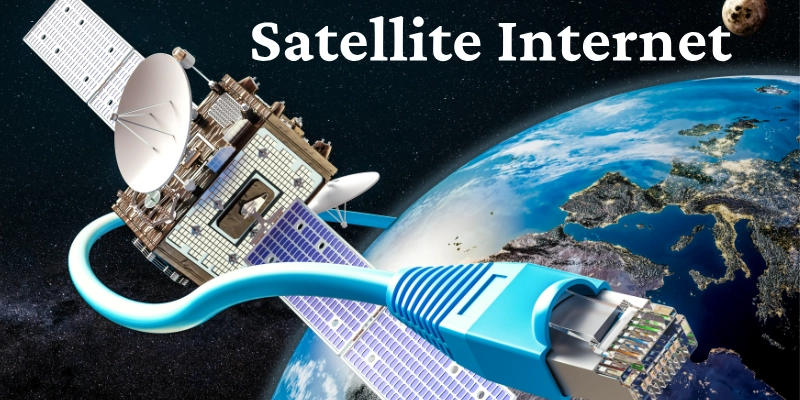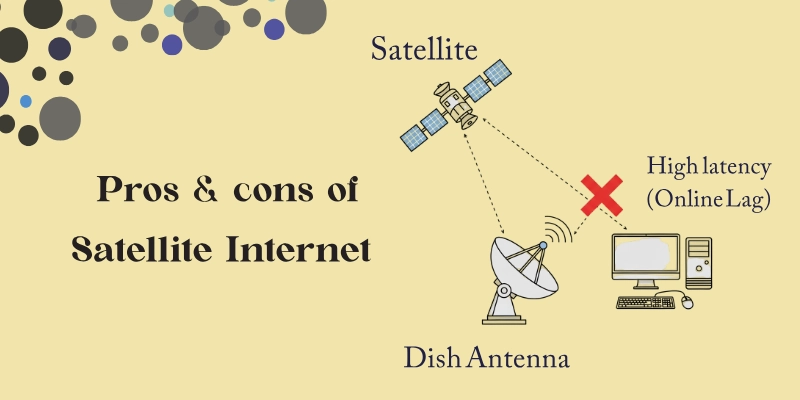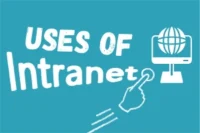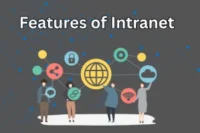How Satellite Internet Works: Complete Guide
Published: 17 Sep 2025
Satellite internet is a form of satellite communication that provides connectivity in places where traditional broadband or fiber networks cannot reach. From rural villages to ships at sea, satellite networks deliver reliable coverage by using orbiting satellites, ground stations, and specialized equipment like a satellite dish and antenna.
In this guide, we’ll explore how satellite internet works, the role of uplink and downlink signals, the impact of latency, and the technology behind frequency bands, bandwidth, and data transfer.
What is Satellite Internet?
Satellite internet is a high-speed internet service delivered through a space-based network. Instead of relying on cables, data travels between Earth and satellites orbiting in space, ensuring coverage even in remote areas. This makes it a powerful alternative to DSL or mobile networks.
How Satellite Internet Works: Step-by-Step
The following are the step-by-step stages of how satellite internet works, showing how data travels from your device to space and back.
Uplink
When you request something online, such as opening a webpage or starting a video stream, your user terminal (a modem connected to a satellite dish) begins the process. The dish converts digital data into radio waves and sends it upward through the uplink. This signal is directed toward a satellite orbiting thousands of kilometers above Earth.
- Your modem + satellite dish sends the request.
- Digital data is converted into radio waves.
- The signal travels upward to the orbiting satellite.

Space Segment
The satellite, often positioned in geostationary orbit (about 35,786 km above Earth) or low Earth orbit (LEO) (a few hundred km away), acts as a relay station. It receives your uplink signal, amplifies it, and transmits it back down toward a specific ground location. This “space segment” is crucial because it extends connectivity to areas where fiber or cable internet cannot reach.
- Satellites act as a “mirror” in space.
- Receives, amplifies, and redirects signals.
- Connects even the most remote areas.
Ground Station (Network Operations Center)
The satellite beams the signal to a ground station, also called a Network Operations Center (NOC). This facility connects directly to the terrestrial internet backbone, where websites, servers, and online services are hosted. The ground station processes your request (for example, fetching data from a website) and prepares to send the response back to the satellite.
- Signal lands at a ground station/NOC.
- Connects to the main internet backbone.
- Fetches requested data from servers.
Downlink
Once the data is ready, the ground station transmits it back to the satellite, which then sends it to your dish through the downlink. Your dish receives the signal, and the modem converts it back into digital data. This information is finally delivered to your Wi-Fi router and distributed to your connected devices.
- Data travels from ground station → satellite → your dish.
- Modem converts the signal back into usable data.
- The router shares it with your devices.
Complete Cycle
This entire transmission process from sending a request to receiving the response takes only a fraction of a second. However, because of the long distances involved (especially with geostationary satellites), satellite internet typically has higher latency (delay) compared to fiber or cable. With newer LEO satellite constellations, latency is being reduced significantly, making real-time applications like video calls and online gaming more practical.
- The cycle happens within milliseconds.
- Geostationary = higher latency, LEO = lower latency.
- Performance improving with new satellite technologies.
The Role of Geostationary Orbit
Most traditional satellite internet systems use a geostationary orbit (GEO), located about 35,786 km above the equator. In this orbit, satellites remain fixed relative to Earth, ensuring constant coverage for large regions.
- Advantages: Wide coverage area, stable signal, fewer satellites needed.
- Disadvantages: Higher latency because of the long distance data must travel.
Newer systems also use Low Earth Orbit (LEO) satellites, which reduce delays by orbiting closer to Earth.
The Equipment Involved 2222
The following are the essential pieces of equipment required to set up and use satellite internet.
- Satellite Dish & Antenna: Receive and transmit signals.
- User Terminal (Modem/Router): Converts signals for your devices.
- Ground Station: Acts as the bridge between the satellite and the internet backbone.
- Space Segment: The orbiting satellite itself.
Frequency Bands and Bandwidth
Satellite internet operates across multiple frequency bands such as Ku-band, Ka-band, and C-band.
- Ka-band: Offers high speeds but is sensitive to cloud coverage and rain.
- Ku-band: Widely used, balanced performance.
- C-band: More resistant to weather interference but requires larger dishes.
The bandwidth available in each band determines how much data transfer can occur at once, directly affecting speed.
Performance Factors
The following are the key performance factors that play an important role in determining efficiency and effectiveness.
- Latency: GEO satellites typically have 500–600 ms latency, while LEO constellations reduce this to 20–40 ms.
- Data Transfer Speeds: Ranges from 25 Mbps to over 250 Mbps, depending on provider.
- Cloud Coverage & Weather: Heavy rain or storms can disrupt signals, especially in Ka-band.
Advantages of Satellite Internet
The following are the main advantages of using satellite internet that make it a useful connectivity option.
- Global coverage, even in rural or maritime regions
- Quick deployment without fiber or cable infrastructure
- Useful for disaster recovery and backup connections

Challenges and Limitations
The following are the key challenges and limitations associated with this technology. Understanding them can help in making better decisions before adoption.
- Higher latency compared to fiber
- Weather-related disruptions due to cloud coverage and rain fade
- Limited bandwidth and potential data caps
- Equipment and installation costs
Innovations in Satellite Internet
The following are some recent innovations in satellite internet that are driving improvements in speed, coverage, and reliability.
- LEO constellations (e.g., Starlink) reducing latency and boosting speeds
- Smart antenna technology for better signal transmission
- Hybrid solutions combining satellite with terrestrial broadband
Conclusion
Satellite internet is a powerful solution that leverages satellite communication, geostationary orbit, and advanced frequency bands to connect the unconnected. By using uplink, downlink, and signal transmission between the user terminal, satellite dish, and ground station, data flows seamlessly across the space segment.
Though latency, bandwidth limits, and cloud coverage remain challenges, innovations in LEO satellites and smart technology are shaping a faster, more reliable future for satellite internet.
💬 Don’t forget to leave a comment and share your thoughts about satellite internet. 🌐 Your feedback helps us create more valuable content for readers like you. 🙌
FAQs
Here are some common questions with clear and easy answers to help you understand satellite inter
Your satellite dish sends an uplink signal to a satellite orbiting in space. The satellite then relays this data to a ground station connected to the wider internet. Finally, the response is transmitted back to your dish through a downlink, giving you internet access.
Latency occurs mainly because signals must travel thousands of kilometers to reach a geostationary satellite and then back to Earth. This long distance adds hundreds of milliseconds of delay. As a result, real-time activities like gaming or video calls can sometimes feel slower.
Yes, weather can impact the strength of satellite signals. Heavy rain, storms, or dense cloud coverage can weaken or block signals, especially in the Ka-band. This is commonly known as “rain fade,” which may temporarily reduce your internet speed or cause interruptions.
Satellite internet mainly uses Ku-band, Ka-band, and C-band frequencies. Each has unique strengths and weaknesses for example, Ka-band offers high speeds but is more sensitive to weather. In contrast, C-band is more reliable in bad weather but provides slower data rates.
Yes, one of the biggest advantages is its wide coverage. Unlike fiber or cable, satellite internet can reach remote and rural areas where other options are not available. This makes it an essential solution for regions with limited connectivity.
Modern satellite internet can provide download speeds ranging from 25 Mbps to over 250 Mbps, depending on the provider. While it may not always match fiber or cable speeds, it’s usually fast enough for streaming, browsing, and video calls. Performance may vary with location and network congestion.
Yes, portable satellite dishes and services designed for vehicles, boats, and airplanes make it possible. However, mobile satellite internet often costs more and may require special equipment. It’s especially useful for travelers who need connectivity in areas without cellular or broadband coverage.

- Be Respectful
- Stay Relevant
- Stay Positive
- True Feedback
- Encourage Discussion
- Avoid Spamming
- No Fake News
- Don't Copy-Paste
- No Personal Attacks

- Be Respectful
- Stay Relevant
- Stay Positive
- True Feedback
- Encourage Discussion
- Avoid Spamming
- No Fake News
- Don't Copy-Paste
- No Personal Attacks





